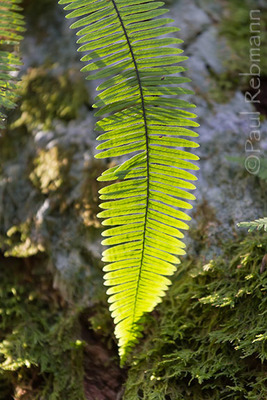
Volusia County Endangered Ferns
Back in October I did a presentation on Endangered Plants of Volusia County for Halifax River Audubon featuring 21 of the 36 plants that the Florida Plant Atlas lists as endangered and having been vouchered for Volusia County. Those 21 species in that program are ones that I photographed somewhere in Florida, five of which are ferns and the subject of this post.
The first endangered fern is the one I most recently photographed and also the smallest. Mainly a fern of southeast Florida occurring on limestone outcrops and the sides of sinks, toothed spleenwort has also has been found in Volusia County.
The ferile fronds are held erect and up to ten inches long with widely spaced pinnae (the separate divisions in a compound leaf or blade). There are two to five sori (a cluster of spore-containing cases called sporangia) along the veins of the underside of the fertile pinnae. The sterile fronds are spreading or drooping, less than 5 inches long and with pinnae that are closer together, each of which is only slightly longer than wide and with only a few coarse teeth. There are usually not more than 12 pairs of pinnae per blade. Toothed spleenwort sterile fronds
Toothed spleenwort sterile fronds
Toothed spleenwort is Asplenium dentatum, a member of the Aspleniaceae, the Spleenwort family of ferns.
Another endangered spleenwort is eared spleenwort, Asplenium erosum. These are typically found on trees, stumps and fallen logs in wet hammocks and swamps. This fern occurs in Volusia and Flagler Counties, along the central west coast of Florida and in Collier County.
In this spleenwort the fertile and sterile fronds are similar and up to nearly 16 inches long. There are ten to 22 pairs of pinnae, each of which is narrowly lance-shaped, toothed and having a lobe (the namesake 'ear') near the base on the upward side of each pinna. Up to ten pairs of sori can be found on each side of the midvein nearest the tip. Eared spleenwort on moss-covered oak trunk
Eared spleenwort on moss-covered oak trunk
Previously Florida occurances of this spleenwort were known as Asplenium auritum which were later determined to be the same species as Asplenium erosum.
The next endangered fern lacks the feathery-looking leaves that we commonly associate with ferns. The most noticable part of this fern is the palmately-lobed sterile blade with the appearance of a mis-shapen hand and is why it is called hand fern. Hand fern, showing both the sterile 'hand' and the fertile spikes
Hand fern, showing both the sterile 'hand' and the fertile spikes
The fertile blades are stalked spikes that grow upward in two rows from the petiole and margins of the sterile blade.
Once common, this fern is now rare due to overcollecting and loss of wetland habitats from draining for developments. Almost aways found in the leaf bases (boots) of sabal palms in hammocks and swamps from central Florida into the Everglades.
This species was first described by Carl Linnaeus as Ophioglossum palmatum in 1753. Due to distinct differences between hand fern and other Ophioglossum species, some botanists now classify it in a different genus as Cheiroglossa palmata.
The following ferns are all Pecluma species that were previously considered to be in the genus Polypodium before 1983.
The first of these we will look at is the comb polypody, Pecluma ptilota var. bourgeauana. Also called swamp plume polypody it is found in floodplain forests, moist hammocks and swamps in much of the Florida peninsula, most often terrestrial, but sometimes growing on trees as seen here and less likely on rocks.  Comb polypody on live oak tree
Comb polypody on live oak tree
This fern can be differentiated from the other Florida Pecluma species by having a rachis (the center stem of the leaf blade) that is either smooth or if not has scales that are thread-like. The overall outline of the blade is elliptic, tapering to a point at both ends.
A similar-looking fern is the plume polypody - Pecluma plumula. Plume polypody on live oak tree
Plume polypody on live oak tree
The difference between this and the previous fern is that this one has a black rachis with whitish to brown lance-shaped scales. Also plume polypody is more likely to be found on trees or rocks and less likely on the ground. The blade is divided into 20 or more narrow segments.
The habitat is wet hammocks and swamps of the Florida peninsula. Much like resurrection fern, plume polypody is known to shrivel up during drought and revive with rain.
A sixth endangered fern found in Volusia County is another polypody, Pecluma dispersa, the widespread polypody and one that I have not photographed, although it is one that I will be keeping an eye out for. Similar to the plume polypody, but one of the differences is that the blade is lance-shaped instead of tapering towards the base.
Clicking on any of the links or images above will take you to the Wild Florida Photo page for that species where you can find more photos of and information about that subject.
Paul Rebmann
December 2, 2022